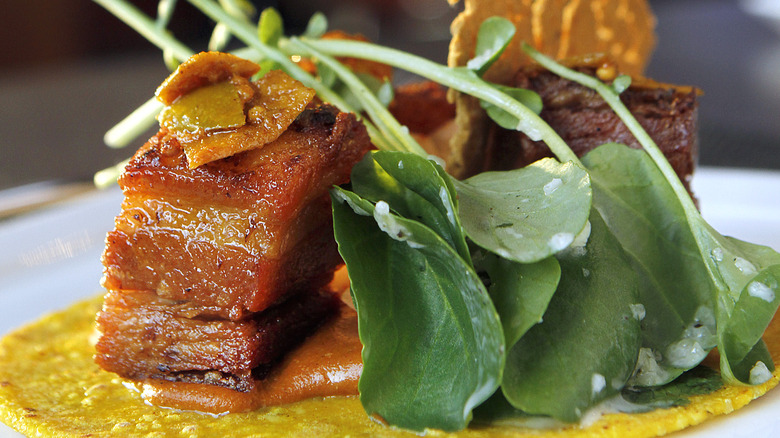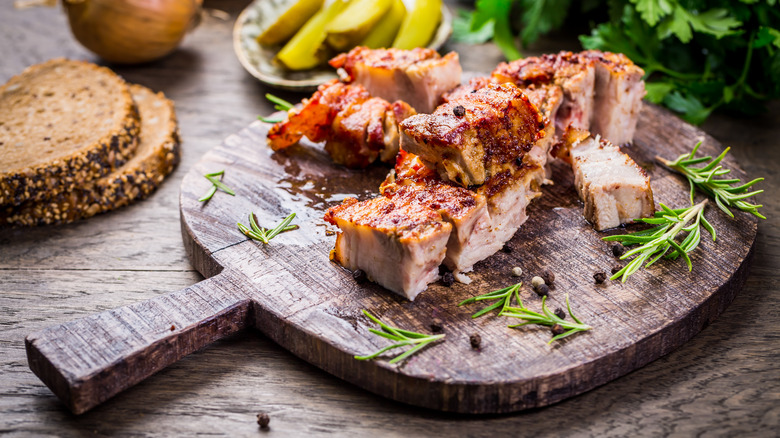For Extra Decadent Pork Belly, Give It A Confit-Style Upgrade
Oh, the ways to cook pork belly, the beloved protein known around the world. From siu yuk (Cantonese roast pork belly) to Thit Kho (Vietnamese-style salty pork), pork belly has deep roots in Asian cuisine, and has been a delectable food item for centuries (since humans have been farming pigs). Cure it and smoke it, and you know what happens. Bacon as we know it happens. There's no wrong recipe to choose when learning to perfect pork belly preparations at home, but for a pork belly experience like no other, try a pork belly confit.
It's an extravagant but easy way to serve it, according to Rich Parente, Chef and Owner of Clock Tower Grill in Brewster, New York. "You can also go all-out and cook pork belly confit," Parente, who also runs Clock Tower Farm with wife Cassie, says, "Which is a similar process to braising but swaps the stock for rendered fat."
Instead of searing and slow cooking the pork belly in liquid, the confit process involves brining the pork belly in liquid and then cooking it low and slow while it's surrounded in fat. The last step is to brown the skin before serving. It's really the best of both worlds: Crispy fried pork on the outside and the most tender, juiciest pork on the inside.
How to cook the best pork belly confit
Mastering the art of how to make duck confit, along with how to make Wolfgang Ban's basic brine, means you can confit just about anything. The only problem is that once you get the knack of using the confit process on one meat (duck), then you move on to another meat (pork belly), you figure out it's all very delicious, and now you want to try the confit process on even more meaty things. Don't worry. We know exactly how you feel. Here are the 11 best foods that work best for the confit process.
For pork belly, you'll use a cup of salt for every two and a half pounds, and you can switch up the spices any way you like. Brine the pork belly for eight hours before cooking it in fat at 200 degrees Fahrenheit for four to six hours, and just like the duck, it will melt in your mouth. While the protocol is to slowly cook the pork in its own fat (lard), you can also play around with this aspect of the process. For a lighter option, cover the pork belly in olive oil, or go a little wild and cover the pork belly in duck fat for a truly luxurious experience. The last step is to sear the pork belly to make the skin super crispy. Slice the pork belly uniformly or leave it whole; it depends on how you serve it.

